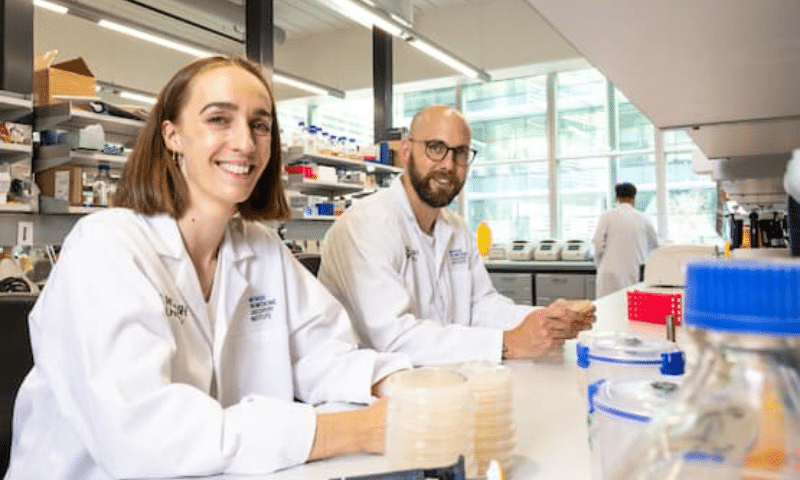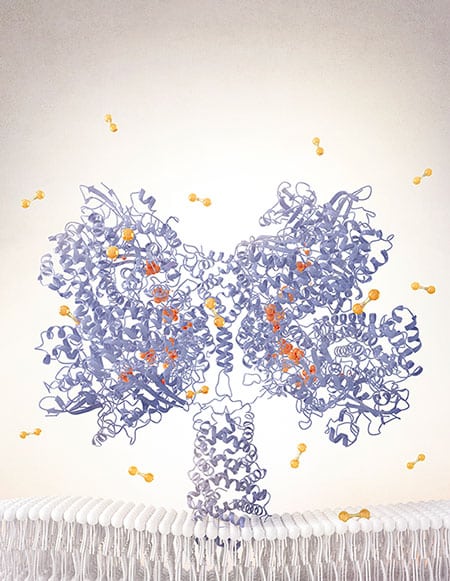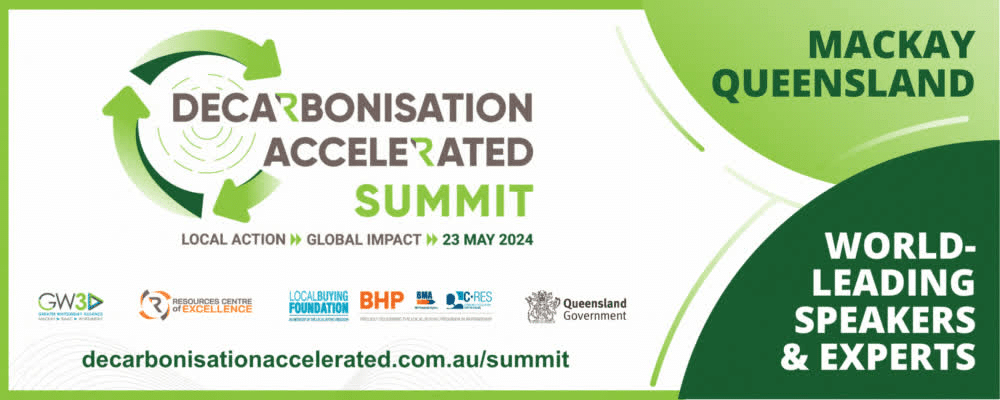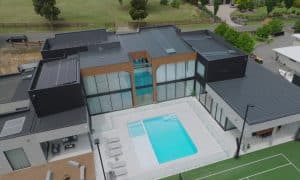Australian scientists have made a groundbreaking discovery in the field of renewable energy. They have discovered an enzyme that can convert air into electricity, a development that could revolutionise how we generate power.
The team of scientists, led by Dr Rhys Grinter, PhD student Ashleigh Kropp and Professor Chris Greening from the Monash Unversity Biomedicine Discovery Institute in Melbourne, Victoria has been working on this project for several years. The discovery was revealed in the journal Nature. They have identified a specific bacterial enzyme, known as HUC, that has the ability to catalyse contact with hydrogen into an electrical current just like a battery.
Energy Matters has been a leader in the renewable energy industry since 2005 and has helped over 40,000 Australian households in their journey to energy independence.
Let us discuss and choose the best quote that suits your needs and budget, and we can connect you with our trusted local solar installers in Melbourne, who will provide up to 3 FREE quotes for your home and business solar energy system. Get your free quotes today!
Quotes from the scientists
“We’ve known for some time that bacteria can use the trace hydrogen in the air as a source of energy to help them grow and survive,” Professor Greening said.
“But we didn’t know how they did this, until now.”
Dr Grinter notes, “Huc is extraordinarily efficient. Unlike all other known enzymes and chemical catalysts, it even consumes hydrogen below atmospheric levels – as little as 0.00005% of the air we breathe.”
“Once we produce Huc in sufficient quantities, the sky is quite literally the limit for using it to produce clean energy.”
“It is astonishingly stable. It is possible to freeze the enzyme or heat it to 80 degrees Celsius, and it retains its power to generate energy,” Ms Kropp said.
“This reflects that this enzyme helps bacteria to survive in the most extreme environments. “
 PhD student Ashleigh Kropp left, and Dr Rhys Grinter in the Grinter Lab at Monash University’s Biomedicine Discovery Institute
PhD student Ashleigh Kropp left, and Dr Rhys Grinter in the Grinter Lab at Monash University’s Biomedicine Discovery Institute
Huc enzyme: It is electrical
The enzyme is known as Huc (pronounced “Huck”). The researchers extracted the Huc enzyme responsible for using atmospheric hydrogen from a bacterium called Mycobacterium smegmatis. It aids their development and survival in various environments, including soil, oceans, volcanic craters, and even Antarctica.
A sustained electrical current is generated by Huc, a “natural battery,” from the air or additional hydrogen.
The molecular blueprint of atmospheric hydrogen oxidation was revealed by the researchers using a number of cutting-edge methods. They broke new ground to create the most resolved enzyme structure ever recorded using this method by using advanced microscopy (cryo-EM) to determine its atomic structure and electrical pathways. Also, they demonstrated how the pure enzyme generates energy at very low hydrogen concentrations using a technique called electrochemistry.
 The enzyme Huc from Mycobacterium smegmatis consumes atmospheric hydrogen.
The enzyme Huc from Mycobacterium smegmatis consumes atmospheric hydrogen.
What makes this discovery so exciting is that it could provide a limitless source of renewable energy. Unlike solar PV or wind power, which relies on specific environmental conditions, this enzyme-based system can work anywhere, as long as the air is breathable.
The enzyme-based system also has the potential to be much cheaper and more sustainable than traditional energy sources. Unlike fossil fuels, which emit greenhouse gases and contribute to climate change, the enzyme-based system produces only water as a byproduct.
Important to note
It is important to note that this discovery is still in the early stages of development. The enzyme is currently only able to generate very small amounts of electricity, and scientists are still working to improve its efficiency and scalability.
Nonetheless, this discovery represents a significant step forward in the quest for sustainable energy sources. The potential applications of this technology are vast, from powering small electronic devices to providing electricity to entire cities.
Discovering an enzyme that can turn air into electricity is an exciting development that offers hope for a cleaner, more sustainable future. As research into this technology continues, we may see a world where the air we breathe is used as a limitless source of clean energy.
Switching to a better plan?
You may already have an energy plan but want to shop for a better deal. If you’re looking to save money on your electricity and gas bills, Energy Matters can help using our “Energy Health Check”!
Energy Matters’ “Energy Health Check” is a cutting-edge energy comparator tool that allows you to compare your area’s most competitive retail offers. We collect the data from our wide range of trusted retailers, allowing you to decide about changing your plan.
If your goal is to minimise the cost of your gas and electricity bills, switch to a better plan now!
Sources&Images: Monash University website, Monash Biomedicine Discovery Institute Twitter, Nature website
















































